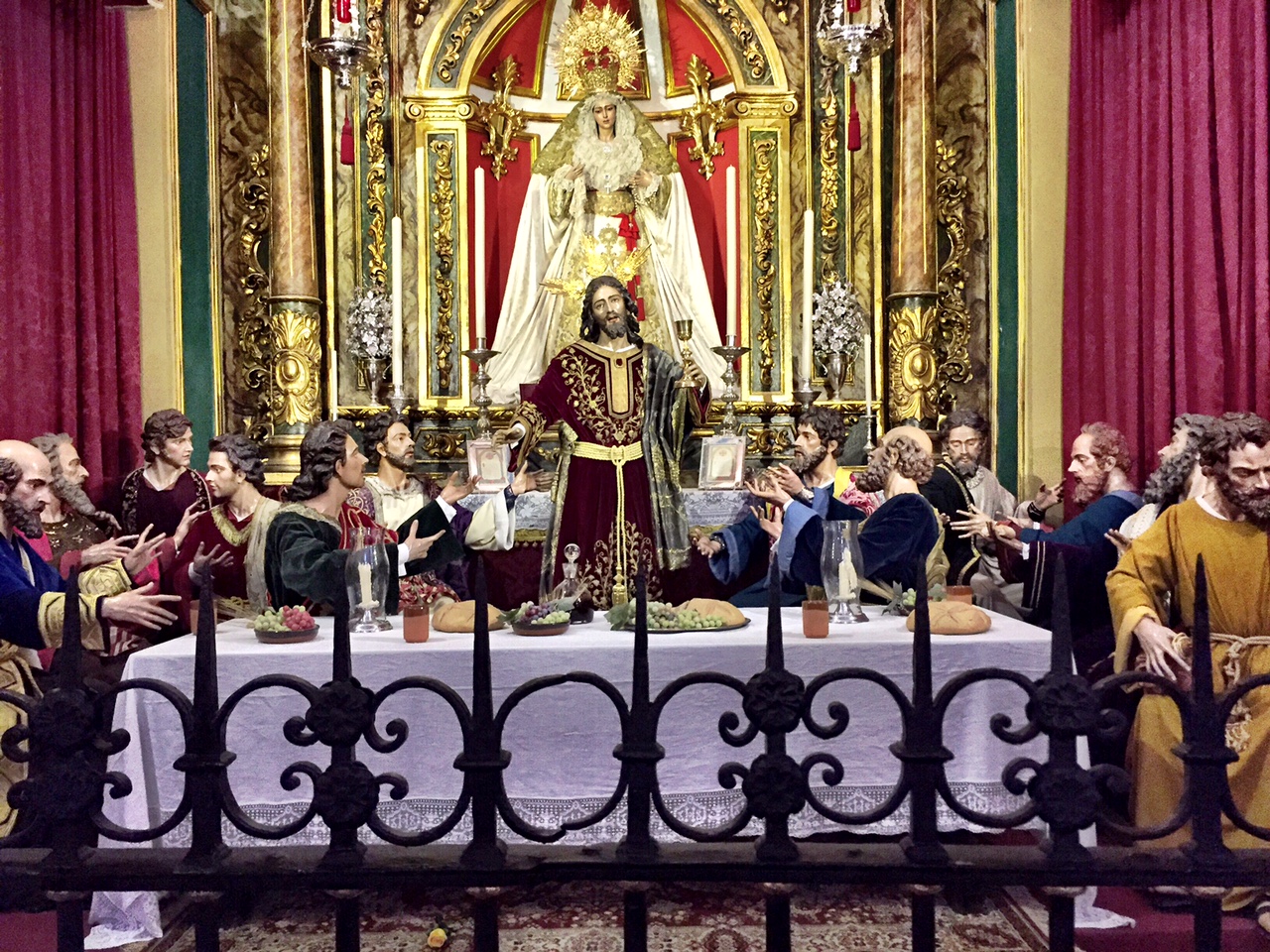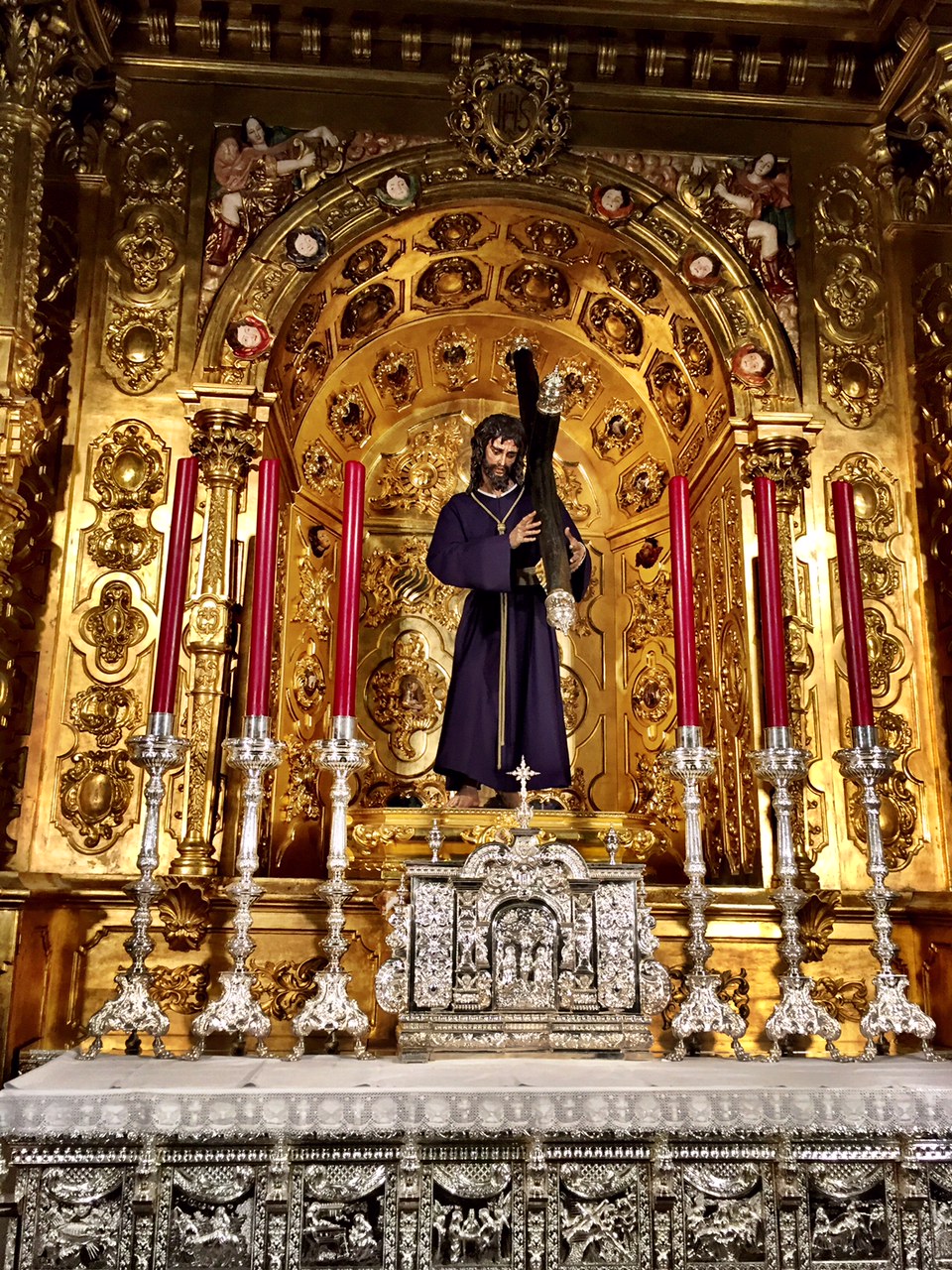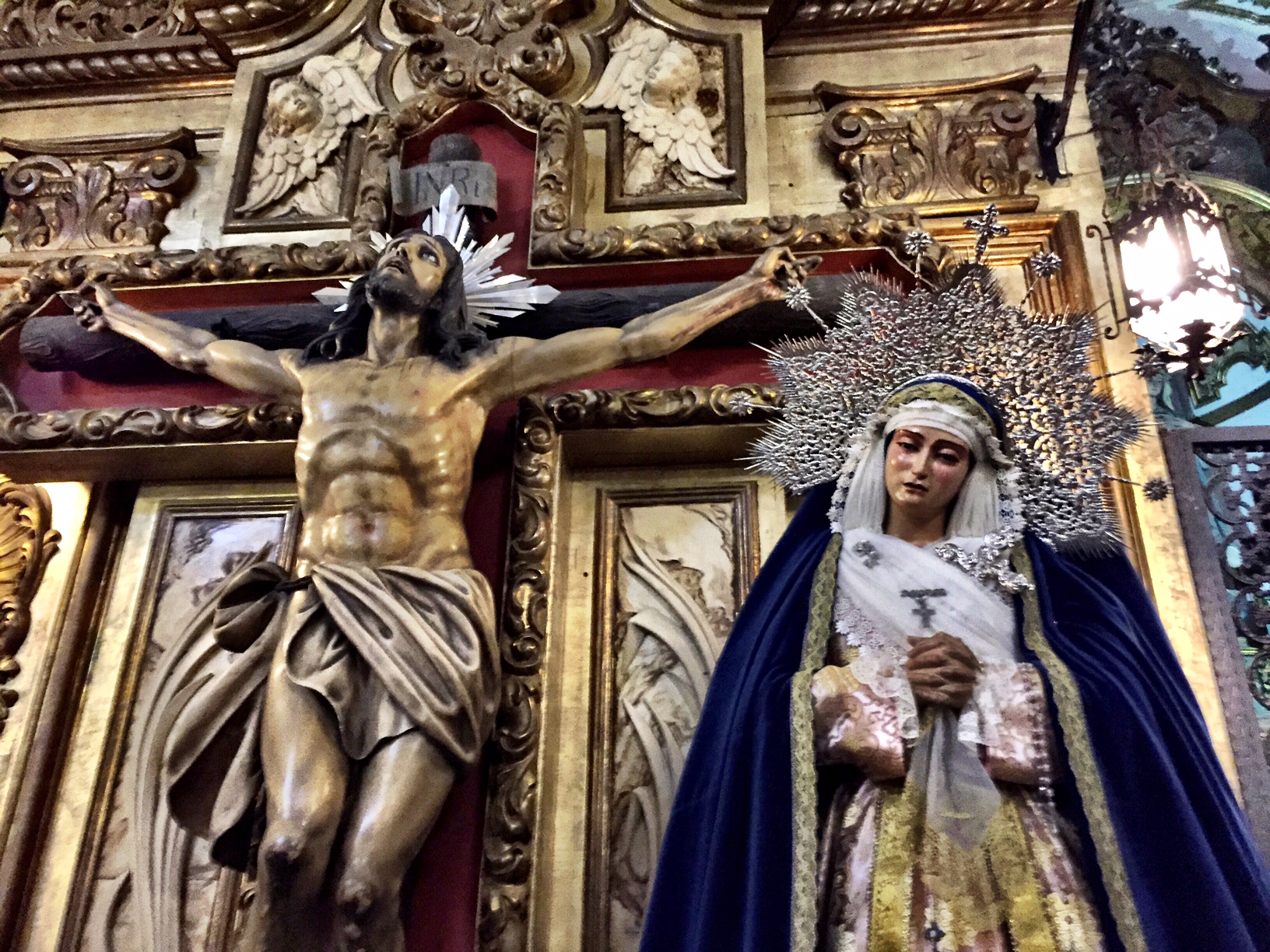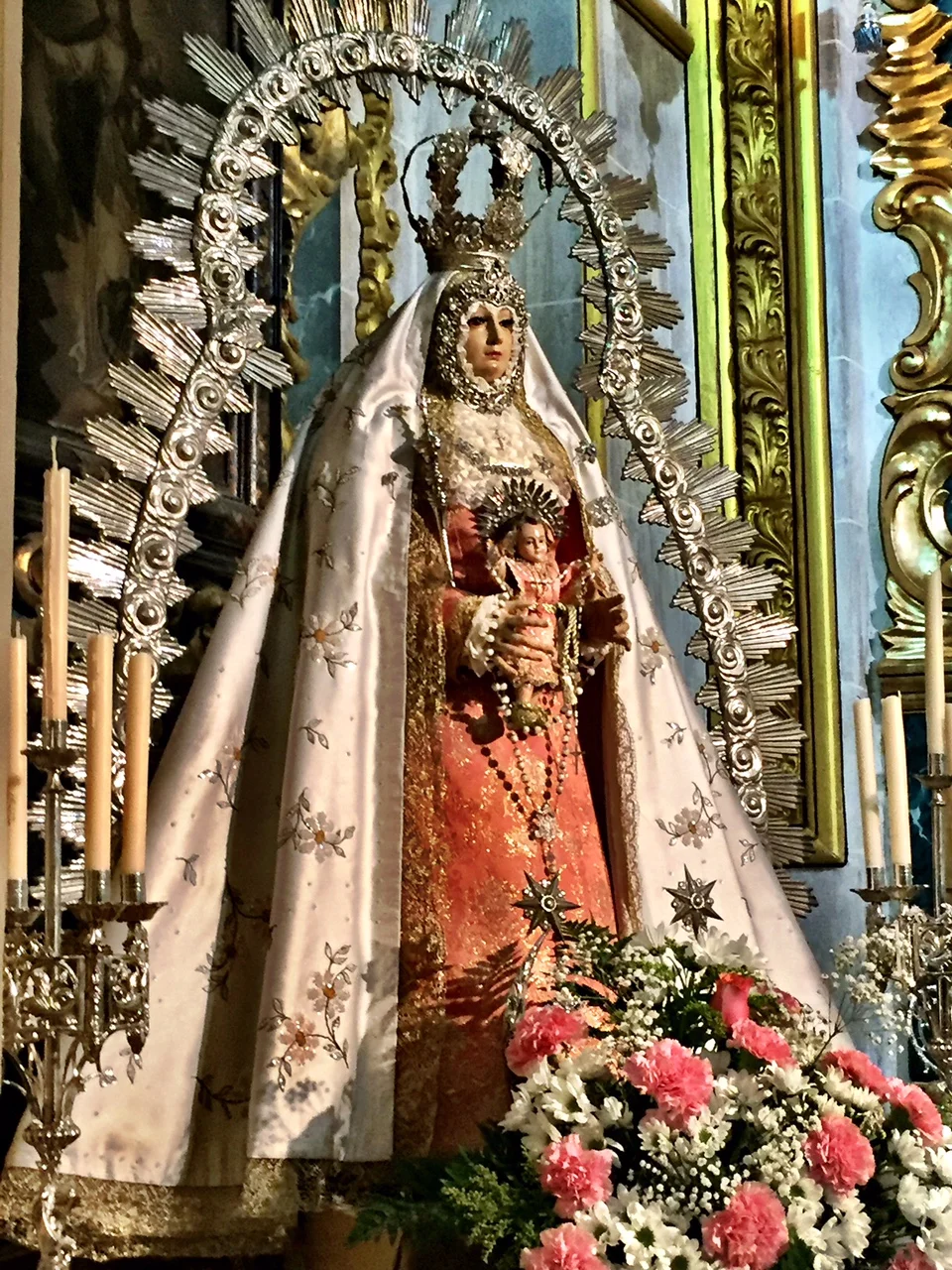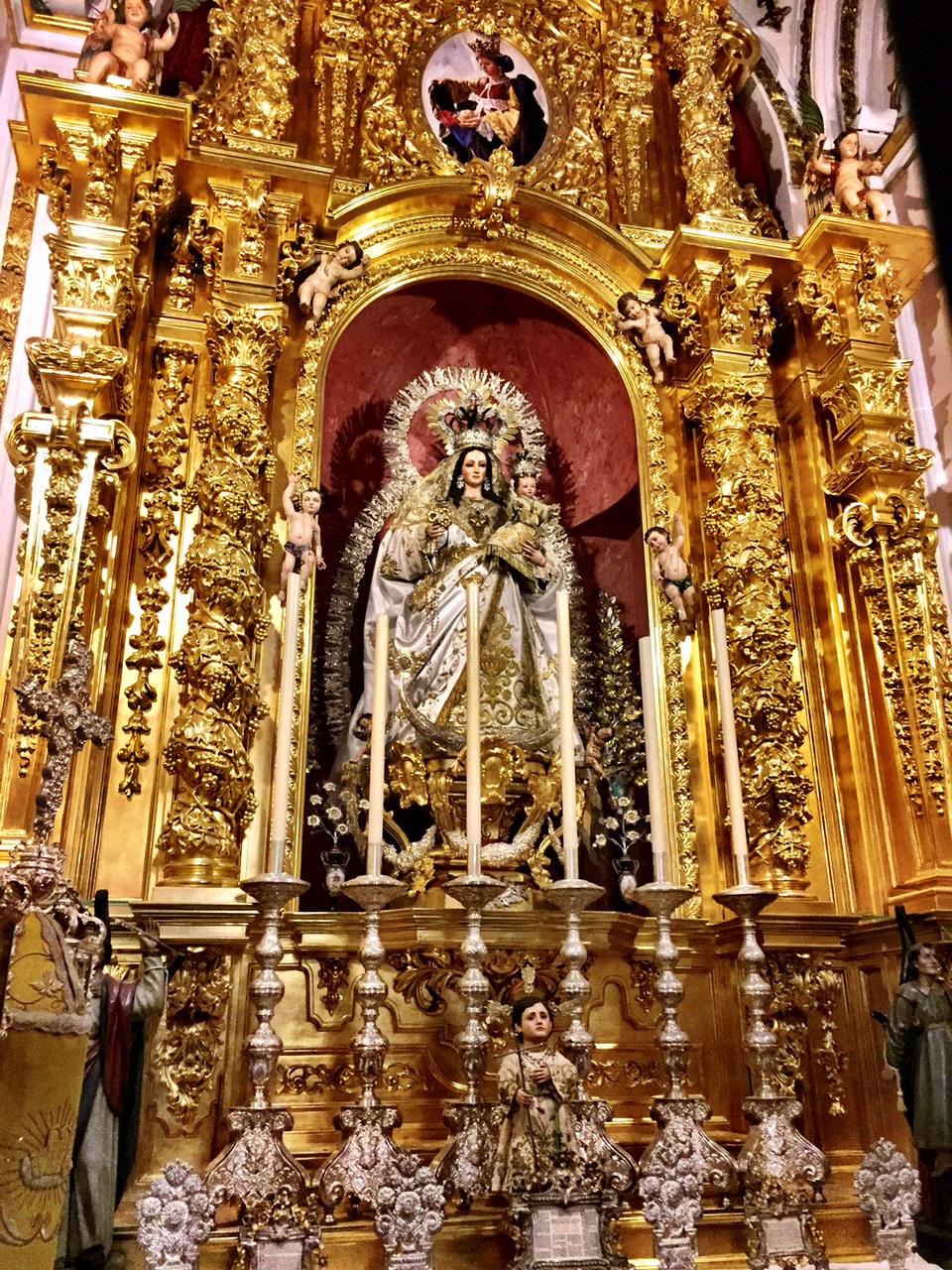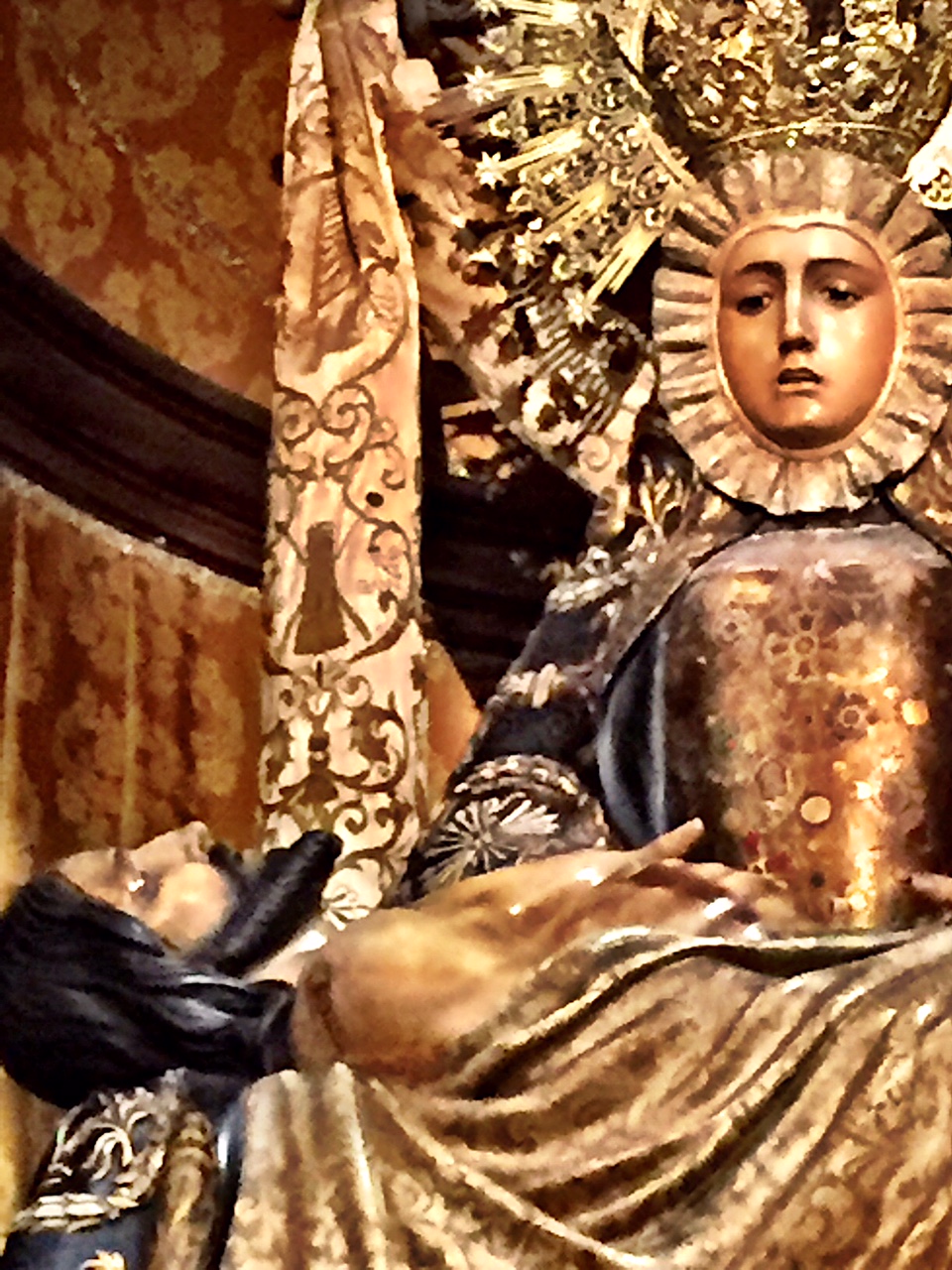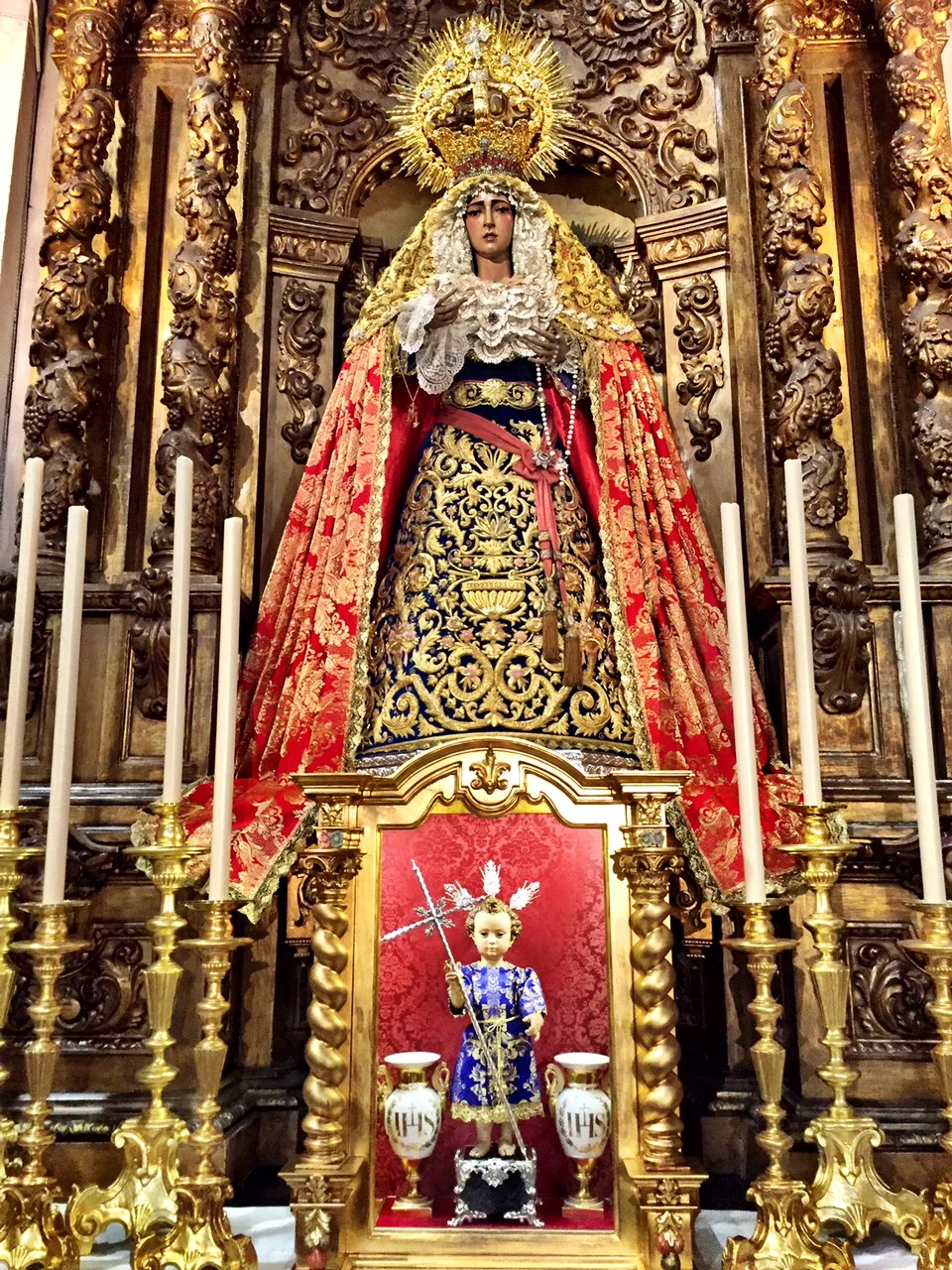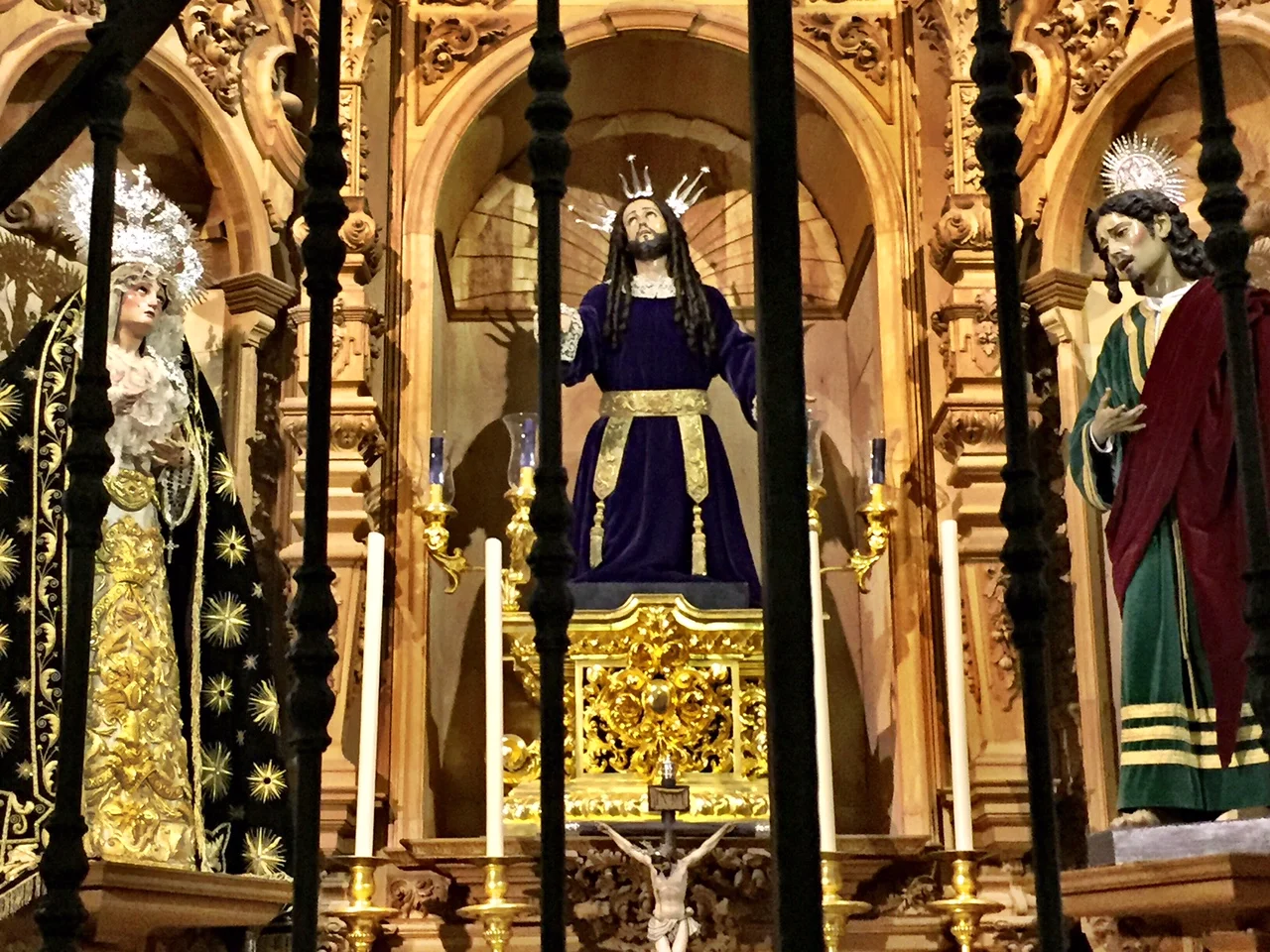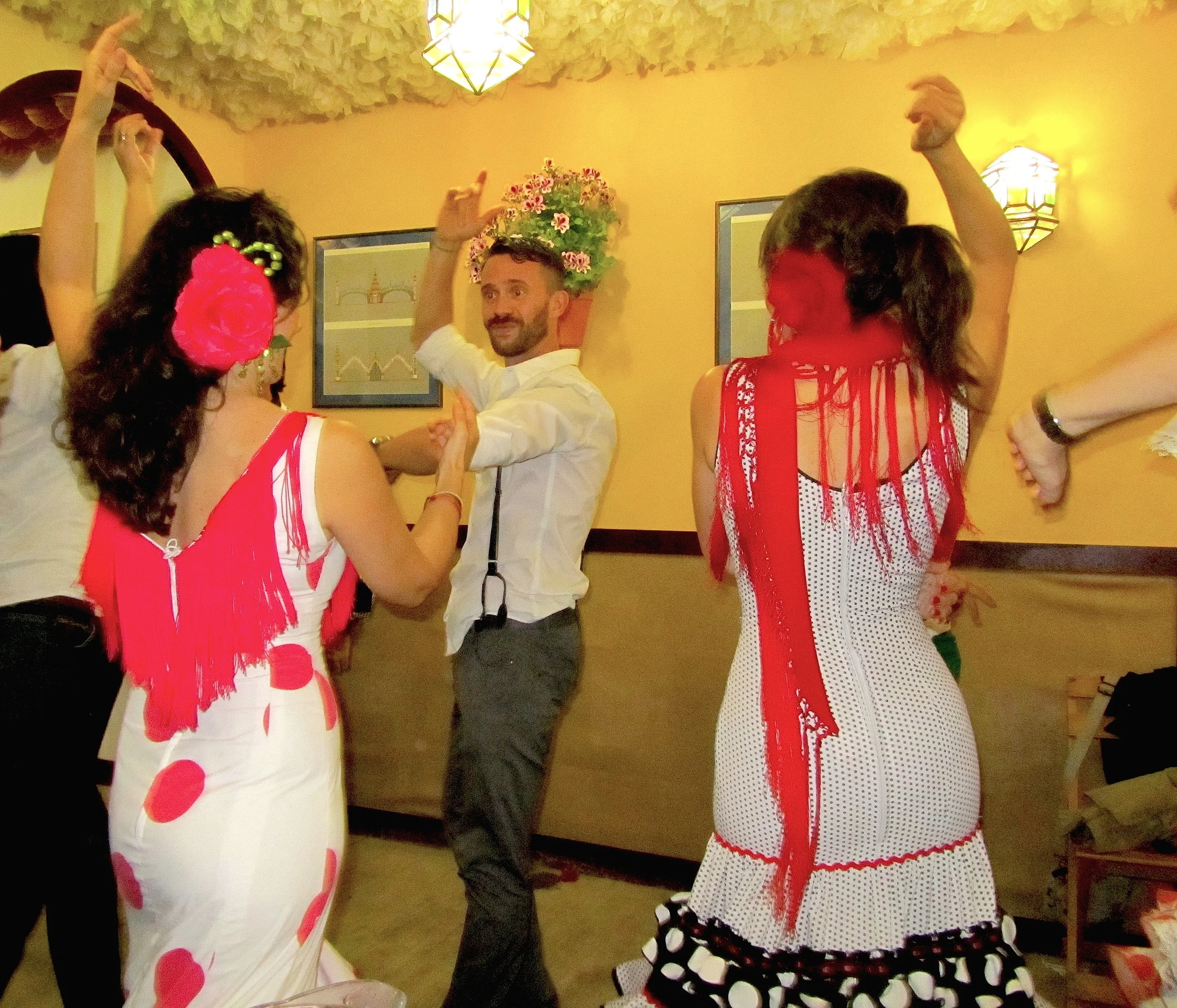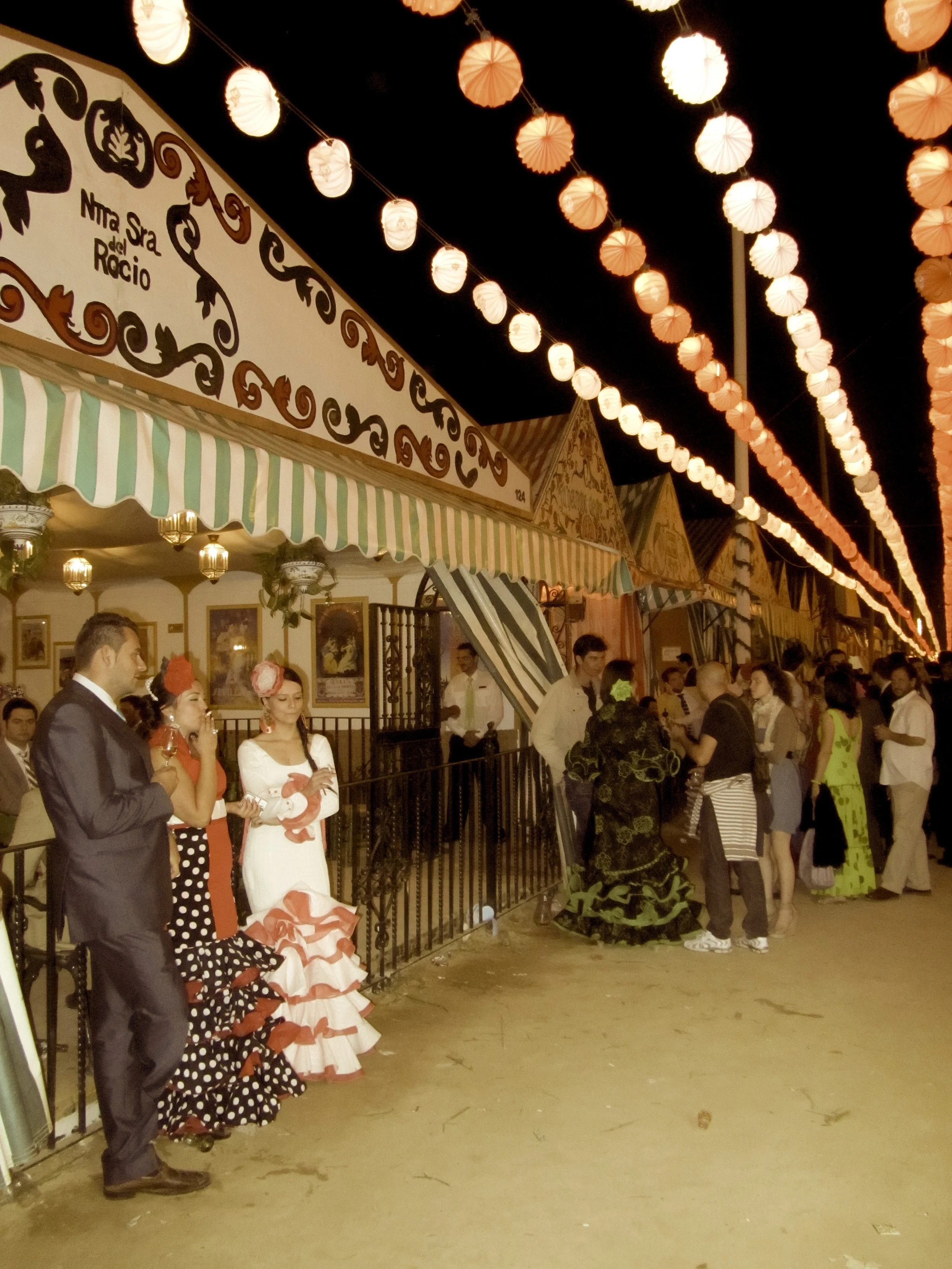The ornate interior of the Iglesia de los Santos Mártires in Málaga, Spain
As our photos attest, this church, dedicated to Ciriaco and Paula, the patron saints of Málaga, is a wonderment of Catholic excess.
It's quite unassuming from the outside. A trio of Mudejar-inspired brick-lined arches, devoid of ornamentation, carved into the side of the structure. No steps leading up to a grand entrance. You'd think it was a side entrance, situated as it is on a jag of a narrow street.
But inside! The Iglesia de los Santos Mártires (the Church of the Holy Martyrs) is utterly dazzling, white arches everywhere, lined in gold, gilded and glittering. Altars accented with slabs of marble, one a deep crimson niche. The style could be considered Rococo Loco.
“The Iglesia de los Santos Mártires is utterly dazzling. The style could be considered Rococo Loco.”
We entered, overwhelmed. Your eyes don't know where to focus. So we turned to our right and began to work our way around the edges of the church.
The first thing we saw was a lifesize statue depiction of the Last Supper behind a wrought iron fence. We couldn’t help but giggle. Sometimes the ostentatiousness of Catholics is astounding. But it makes for a fun exploration.
We walked the periphery of the sizable space, snapping away photos of the various niches, each with its own interpretation of the Virgin Mary and/or Jesus.
And unlike the city’s main cathedral, photography is allowed here.
The Patron Saints of Málaga
The church is dedicated to the two patron saints of Málaga: St. Ciriaco and St. Paula. These two were part of a Christian sect forbidden by the Roman Emperor Diocletian. The Christian community had a secret meeting place in Málaga. But on June 18, 303, Roman soldiers learned of the spot and raided it. Ciriaco and Paula were among those captured.
Even though they were tortured, the pair refused to renounce Christ. So they were tied to trees along the banks of the Guadalquivir River and stoned to death.
Not wanting anything that could be venerated, the soldiers built a massive bonfire to destroy the remains. But the skies opened up with a torrential downpour and doused the flames. When the soldiers left, the surviving Christians took the bodies and buried them in an unknown locale.
Fast forward to the Reconquista, when the Catholics started taking back the Iberian Peninsula from the Muslim rulers. A monk named Fray Juan de Carmona told the Catholic kings of a vision he had: Build a church dedicated to Ciriaco and Paula — and they would be victorious in the battle for Málaga in 1487.
It seems just the promise was good enough, for they did end up winning. They then dispatched a letter to Pope Innocent VIII, who approved construction of the Iglesia de los Santos Mártires.
Thus began a cycle of destruction and rebuilding from incidents including a cannonball (1854), earthquake (1884) and looting (1936).
In 1490, Ferdinand and Isabella appointed Ciriaco and Paula the official patron saints of Málaga.
Every June 18, there's a solemn procession through the historic quarter to honor the martyrs.
The church is home to four Semana Santa (Holy Week) brotherhoods.
Iglesia de los Santos Mártires, located in the city center, is certainly worth exploring. –Wally
RELATED: How to Enjoy Feria, Southern Spain’s Springtime Festival

